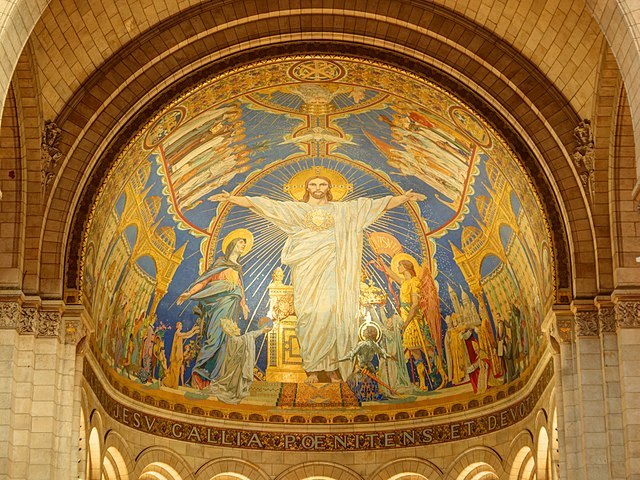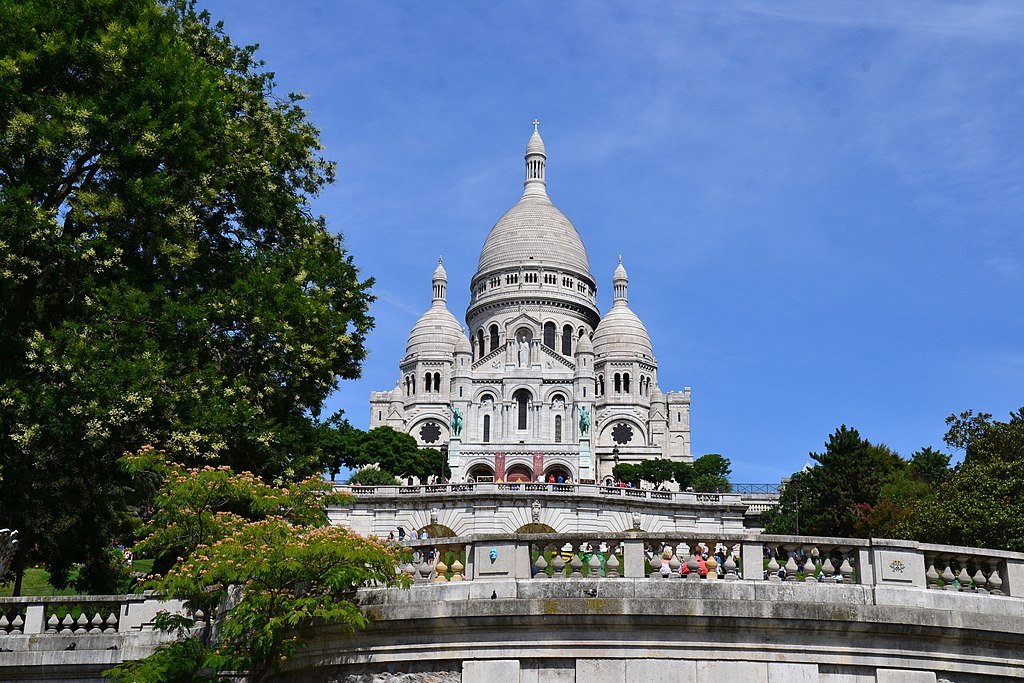The Sacré-Coeur, that is, the Basilica of the Sacred Heart, is one of the most emblematic places in Paris and in all of France. It is the second most visited monument each year in the French capital with more than 10 million visitors. But this historical monument was never officially regarded as a historical monument, despite the fact that it was erected more than a century ago.
On October 13, the Ministry of Culture and the regional commission for heritage and architecture of Ile- de-France, the region that includes Paris, finally decided to register this church as a historical monument. It was begun in 1875, completed in 1923 and dedicated to the Sacred Heart of Jesus.

The reactions to this administrative decision have not been long in coming. And the furious criticisms of this decision to protect this well-known church, in fact, hide an important anti-Catholic component, especially from the Masonic and Communist sectors.
A Church Of Atonement
The deep animosity that this basilica arouses among these sectors is because of what it represents: An expiatory church in the face of the defeat by Prussia. Months later, the Paris Commune arose in 1871, which caused thousands of deaths and was responsible for the murder of dozens of people, including many clergymen and Catholics. With these painful events, the expiation of so many crimes also had its place among those who wished to build this church.
[The Paris “Commune” and its proposed method of government, namely, the dictatorship of the proletariat, gave rise to the terms, “communism” and “communist”].
Thereafter, and for decades, the Sacré-Coeur has been a target; and as recently as 2017 a popular initiative registered a petition in the Paris City Council with the aim of demolishing this church that “insults the memory of the Paris Commune.” Obviously, the petition went nowhere, but it did show the hatred that the Left and Freemasonry both have towards a church that crowns Paris on Montmartre and where the Adoration of the Blessed Sacrament has not been interrupted for a second in 135 years, neither in times of war nor of epidemics.
According to the Ministry of Culture, it is because of “a misreading of history” that the Church of the Sacred Heart had not yet been declared a historical monument. And according to its critics there is a reason why that had not been done.
Attacks By Freemasons, Communists and Socialists
Philippe Foussier, former Grand Master of the Grand Orient de France, protested on Twitter against the classification of the Basilica of the Sacred Heart of Montmartre as a historical monument, calling for a “discrediting.” In his opinion, this decision is “an insult to the 30,000 dead of the commune.”
This violent revolutionary process is an icon and a reference point for Communists, as it already was for Marx himself. And to this day it remains a symbol for the French and international Left.
Ian Brossat, leader of the Paris Communists, has sworn, on several occasions, to dismantle the Sacré Coeur and replace it with a “space of solidarity.”
Further, the socialist Lionel Jospin, former prime minister of France and former presidential candidate, when asked in 2017, which monument would he destroy if it had the power to do so, answered without hesitation – the Sacred Heart of Paris, as he said it is a symbol of “obscurantism, bad taste and the reactionary.”
Father Jacques Benoist, one of the leading experts on the Montmartre basilica, explains that the accusation of “reactionary” that is thrown at the Basilica comes from the Communist Party. And this is confirmed by the Communist senator Pierre Ouzoulias, who affirms that the Sacre Coeur “is not a monument like any other,” but created to “expiate the crimes of the Commune.”
The Reasons For This Hatred
For the religious, the official text of the consecration, engraved on a marble plaque placed in the corridor of the Sacred Heart around 1914, bears witness to these crimes. Here one cam read phrases, such as, “amend our sins,” “obtain the infinite mercy of the Lord,” “forgive our faults,” or “put an end to the misfortunes of France.” The Communards are not mentioned, although this event was certainly in the minds of the builders of the church – however, its construction had been decided upon six months before the Communard revolts.
The crimes themselves are indisputable. In fact, the church was erected in the same place where on May 26, 1871, 49 hostages were massacred, including 10 clergymen, by an angry mob. And this act was not isolated. Then came the government repression at the hands of Adolphe Thiers, which ended the commune. “The communists have not forgotten this, who, under the influence of Marx and then Lenin, integrated this event, turned it into a myth, in their collective memory”, explains Father Jacques Benoist. Thus, speaking of expiation for the crimes of the Commune is something that quickly inflames the French Communists.
As for the accusation that the Sacred Heart of Paris is a symbol of “obscurantism,” Father Benoist is surprised by the declarations of the Masonic leader because “those who were in charge of France, from the beginning of the 1870s, were really your [Masonic] spiritual ancestors. There were two types of Republicans: the Blues and the Reds. The Blues, Thiers and Gambetta. Where the Masonic influence was powerful was the bourgeois republic, which feared the Reds, the extreme Left. In 1871, the first massacred the second.”
The Real Origin Of The Basilica
It must be borne in mind that according to the history of Montmartre, the hill where the Sacré Coeur was built, was always a religious place. It was first a druidic place; later, the Romans erected a temple dedicated to Mars and Mercury; and, later, numerous Christian buildings were built there. Moreover, the very name of Montmartre derives from “Mount of Martyrdoms.”
In 1559, a fire destroyed a Benedictine abbey located on top of this Parisian hill, but the religious presence remained. And in 1794, the last abbess, Mother Marie-Louise Montmorency-Laval, bravely climbed the steps of the guillotine. The link, therefore, between Atonement, National Vow, and Mount of Martyrdom was clear.
And so, in order to offer a public penance, to atone for the historical sins of France and to counteract the impending apostasy, the great desire of Alexandre Legentil and Hubert Rohault de Fleury was the construction of a church on the hill, to illuminate Paris and act as a point of reference for the distracted and indifferent citizens of the 19th century metropolis.
Translated from the original Spanish version by N. Dass.
The image shows the Sacré Coeur Basilica.
